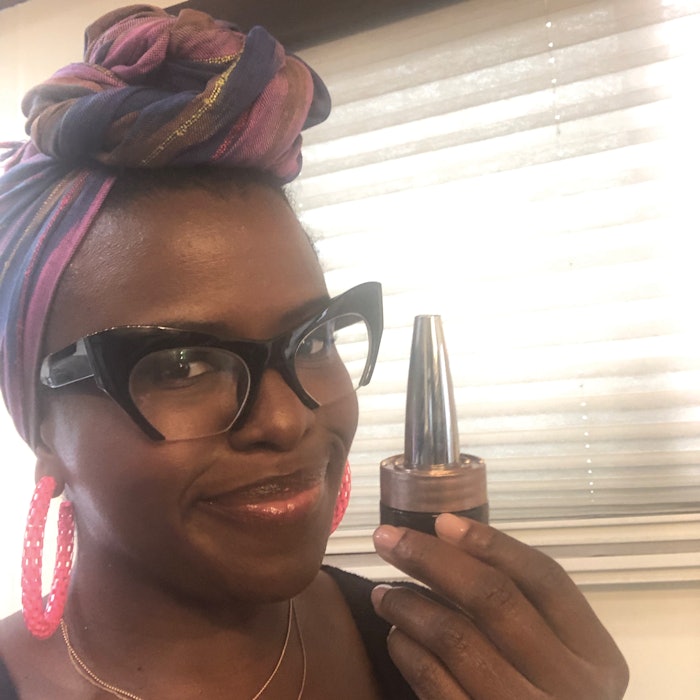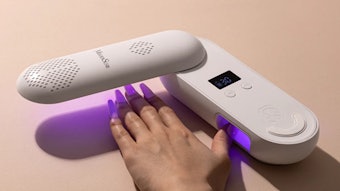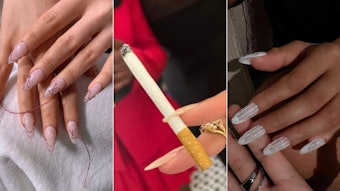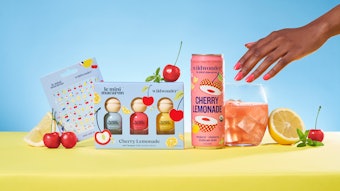
I had quite the love for nails starting when I was 12. By the time I was in high school, I was doing nail designs in the cafeteria. Then I did nails in my dorm room as a fashion design major to pay for books. During my third year in college, I decided to go to school for nails. My love for fashion and film called me back to California. After many triumphs and failures, I created a product from years of necessity. These six turning points make up my life journey as a nail tech.
Log in to view the full article
I had quite the love for nails starting when I was 12. By the time I was in high school, I was doing nail designs in the cafeteria. Then I did nails in my dorm room as a fashion design major to pay for books. During my third year in college, I decided to go to school for nails. My love for fashion and film called me back to California. After many triumphs and failures, I created a product from years of necessity. These six turning points make up my life journey as a nail tech.
Beginnings
I was born Nov. 10, 1978, in Houston, Texas, and raised by a single mother of two. I often got entangled into things I wanted to fix and create. I decided my Barbie dolls needed to be fixed, so I would often shave their heads and redesign their clothes. One day while in the grocery store, I spotted some fake nails I wanted to try. I was completely obsessed with them but also wanted to change the color. My mom said good girls do not wear red, so I bought my Barbie pink nail polish. From there, I added glitter and all sorts of things. Back then, there were no art brushes, so I did everything with a toothpick. I loved drawing clothes, but I often overdid the nails in the drawings. I began buying all sorts of nail polish and stickers. Before long, I was frequently wearing plastic fingertips completely redone with my designs.
By the time I was in high school, I considered myself a master artist. Every morning, I filled my backpack purse with nail polishes, toothpicks and everything necessary to do nails at school. Many students could often hear me coming down the hallway as all my nail polish went clickety-clack in my bag. Designs comprising swirls and flowers were on the scene. I had the confidence to start charging other students to redesign their nails every morning in the cafeteria. One morning, I had a row of girls waiting to get their nails designed. I toiled away trying to beat the bell when a girl stepped up to observe my work. She said, “You cannot do nails—you are Black.” Those six words would drive me to prove her wrong. Was this a hobby or something I could make into a career?
Early Teachings
I wanted to learn the art of nail technology by watching, so my mom agreed to start taking me to the nail shop. One day, an altercation broke out in the nail salon, making me too uncomfortable to return. From then on, I decided to buy small nail kits from Walmart and grocery stores to practice on my mom and different family members. At this stage, my nails were quite lumpy at first but soon began to even out.
However, my love for fashion did outshine my love for nails. When I got the opportunity to go to Long Beach, California, to attend a fashion design school, I took it. Times were still tough at home, so I started doing nails in my dorm room for extra cash to pay for books and supplies. After two years, I earned my associate degree in fashion design and headed home. My mom quickly convinced me that I needed a four-year degree, so I attended Texas Southern University. The programs were different and difficult, and then I was informed that my credits would not be accepted, which meant I wasted a full year. I realized that a four-year degree was not my cup of tea and began searching for nail schools.
I found a quaint little nail school in downtown Houston. To my surprise, everyone in class was Vietnamese, but my teacher was an African American woman named Ms. Mallard. I felt awkward and out of place until I befriended a nice young woman named Trong. Trong was considered an outcast because her husband was Caucasian, but we got along just fine. She would often tell me all the rude things our classmates would say about me as they did not believe I belonged there. Certain relatives felt the same way. When I decided to take this nail journey seriously, they would laugh at me and ask, “Who will hire you, where will you work and how will you make money?” I did not let it bother me and persisted.
One day, a young woman named Rachel Gower came to the school to recruit nail technicians, looking for American students only. This is around the time that Houston nail salons were in hot water for dangerous practices. Mrs. Gower told me that I would have a job as soon as I got my certificate. Soon after, Ms. Mallard let me know it was time to go to Austin, Texas, to take that test. I passed with flying colors and started my first nail salon job at The Upper Hand.
There I learned how to be quick and how to paint nude nails with no streaks. I had a temperance to deal with difficult customers. One of my regular clients did not know my name; she would simply show up to the nail salon and ask for the “short, fat Black one.” I recall a conversation with her about nail extensions where she told me, “Those are ghetto nails.” Otherwise, things were wonderful for me at The Upper Hand, but things were not so great for my mother. My mom happened to lose her job, so I had to pay the bills for a whole year. At this point, I realized that this career was a great decision and that I was ready for the next step.
New Levels
Fashion was calling me, so I stepped out on faith and moved to Los Angeles. I loved doing nails but still viewed it as a lucrative hobby. Within six months, I was accepted into the costume union and was working on large films and TV shows. One day as a costumer on a show, my costume designer stated, “There is no more crime in New Orleans because all the Black people were washed away.” I frequently had to deal with these instances in the movie industry.
Three years later, I had a tragic accident and fortunately only sprained my ankle during pilot week. My doctor informed me it would take six months to heal. I needed a few extra bucks outside of unemployment, so I called the toughest woman I knew: my mom. She said, “What are you worried about? You have your nail license. Why don’t you start doing nails again? You can sit down, make money and heal all at the same time.”
I took my mom‘s advice and called home spa companies. One day, I had a job with five other manicurists. They informed me they also work in the movie industry by doing nails. After a long conversation with them, I decided to give it a try and called all my makeup and hair peers I had worked with as a costumer. I informed them that I was now doing nails and available for clients.
Differences
My career was jump-started by a chance meeting at a hair salon I worked at part time. After that opportunity, I was working with the A-list of Hollywood, but life was not without its woes. There were plenty of times I was called by my agent and rushed to set only to be told the nails were fine, but they just wanted a nail kit there.
I recall a time when I could not get into the trailer for a Vogue shoot. I was stopped at the door because the personal assistant thought I was a homeless person. I also remember a time on a Staples commercial when I was approached by a racist camera operator at breakfast who asked me my name and what I was doing there. I turned to him and said “I am the manicurist” and continued to order my burrito. He did not believe me and soon fetched the producer. After the altercation, I retired to the glam room for a little meditation.
Frequently during photo shoots after a glam meeting, everyone introduced themselves to each other and overlooked me. This was an issue I had to face and consider when being sent to celebrity homes in the middle of the night. Would they be accepting of me, or would they think I was an intruder? I also had to deal with racist photographers, actors and staff. I did not let prejudice stop me; I decided to focus my energy on a problem I was having.
I had finally landed an Oscar-winning client and needed to keep her happy, so I looked for the best possible products. Plenty of gels failed me, but I finally found a great one. I found that gels in pots would flip around and leak frequently. There were times I did not store my brushes correctly, which caused them to bend and break. I wanted a way to put my favorite gel in a nail polish bottle with the applicator protected inside and studied computer-aided design on YouTube. I eventually invented what I needed and named it Pottle. Soon, word got out, and many people were excited, so it was time to hit the trade show circuit.
During preshow setup, my colleagues and I received many strange looks. I was often the only African American vendor at nail shows. It was so rare that African American nail techs would approach me with glee. They would tell me it was exciting to see someone who looks like them doing something brand-new. One particular show just before the pandemic, I arrived to a very stunned showrunner. It was a small local show in Pomona, California, for young artisans but mostly an event for Asian Americans, celebrating a specific Asian holiday. I was glad to be there but still felt out of place. Once again, that feeling of being different stuck in my mind. Still a top nail artist in Hollywood, this was a very small issue compared to the blatant racism I sometimes faced at work.
Falling in love with nails at such a young age was truly a blessing for me. It opened doors for me that I never thought were possible. Even though my first love was fashion, it seemed that nails were actually my passion. Someone once said passion is an extraordinary flotation device. Nail technology has come full circle to become one of the best careers in the world. From a small kid excited about nails to an adult thriving in Hollywood, I remain optimistic about America’s racist views. There is a short list of celebrity manicurists of color, so I love to mentor young nail techs whenever possible.
About the Author
Nettie Davis (@nettienailsit) is a celebrity manicurist, the creator of Pottle and a 2022 Nailpro advisory board member.











